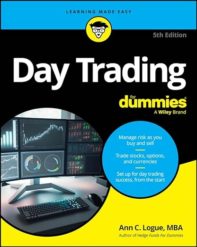The cost of textbooks is an ongoing issue for college students. They cost two tons of money, and why? The textbook companies often blame the used book market. The argument is that the first sale of the book has to come at a high price in order to ensure a fair price for the value given to the student. I agree, to a point, but no one can blame students for wanting to get more value from their purchases or for wanting to save money. At the same time, there is a little graft that goes on in the form of sample texts sent to faculty.
Last week, a sales rep for Wiley Publishing was arrested for diverting 16,000 textbooks to resellers. (Wiley is the publisher of the Dummies series, so I often work with them.) He allegedly had textbooks sent to addresses that he controlled, then resold them. At an average price of $175, his alleged theft cost Wiley $2.8 million.
The graft is in the fact that faculty members get more textbooks than they need, so they often resell them – and the textbook sales reps know this goes on. I need one copy of the text for the class I’m teaching. If I receive a second, I put it on reserve at the library. If it’s a book I’m not assigning but that has helpful information, such as good problems to use in class, I keep it. And if it’s a book that is a duplicate or that I can’t use in any way, I sell it for the cash.
Resellers visit faculty offices to buy unused texts. This is not a great secret on campuses or to textbook publishers. Some publishers try to curtail it by including post-paid mailers with the examination copies, so that faculty members can sell them back. But at the same time, at least a few faculty members can be swayed by the money that can come from getting more examination copies than they can possibly use – maybe not 16,000, but 5? 10? Who knows?
E-books hold a lot of promise for holding down textbook costs, both by saving on printing and distribution costs and by reducing the resale games. OTOH, no one has ever explained to me why an introductory finance text, covering material that hasn’t changed much in the last 30 years, has to be updated every two years and sold for $300.



While the example you bring would clearly cost the publisher lots of money, I doubt that instructors selling their extra sample copies has much impact on the bottom line.
The sale of used textbooks by students is of much greater impact and is a reaction to the great increases that publishers have made to textbooks (the cost is growing faster than tutition which also has been growing way fast!!!).
The publishers have been fighting back, by putting out new editions every couple of years – often with no significant new content.
Ofer
The Cheap Textbook